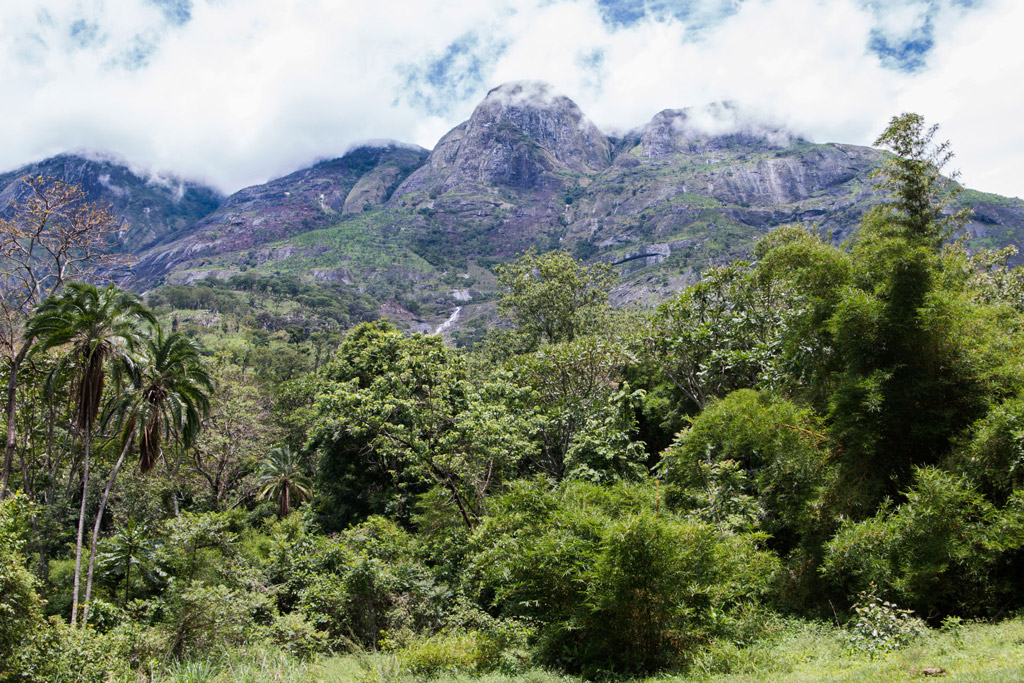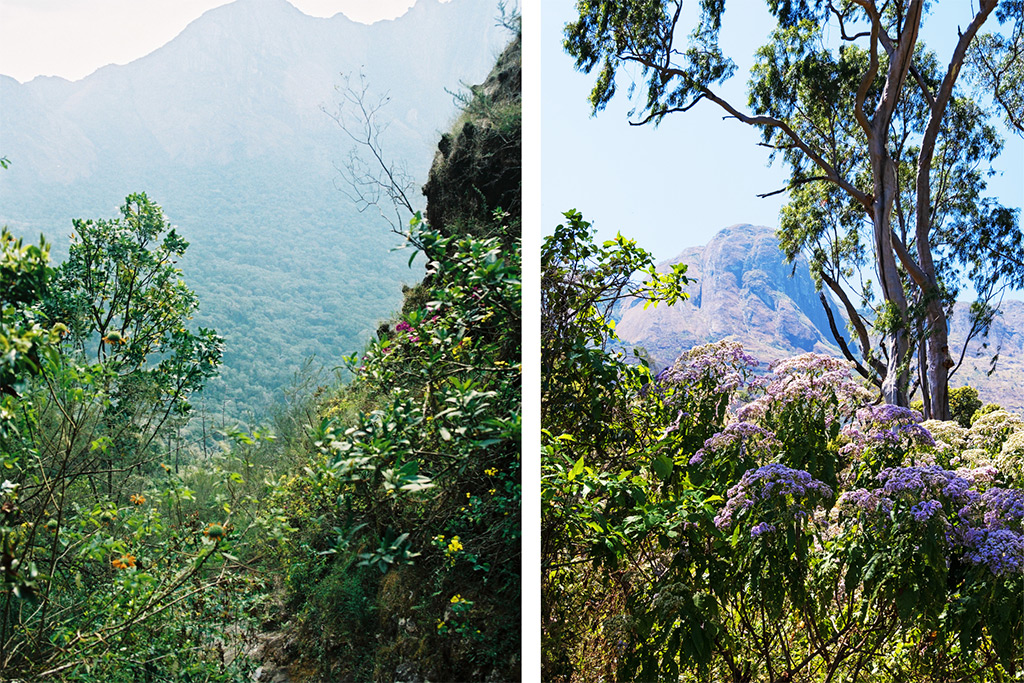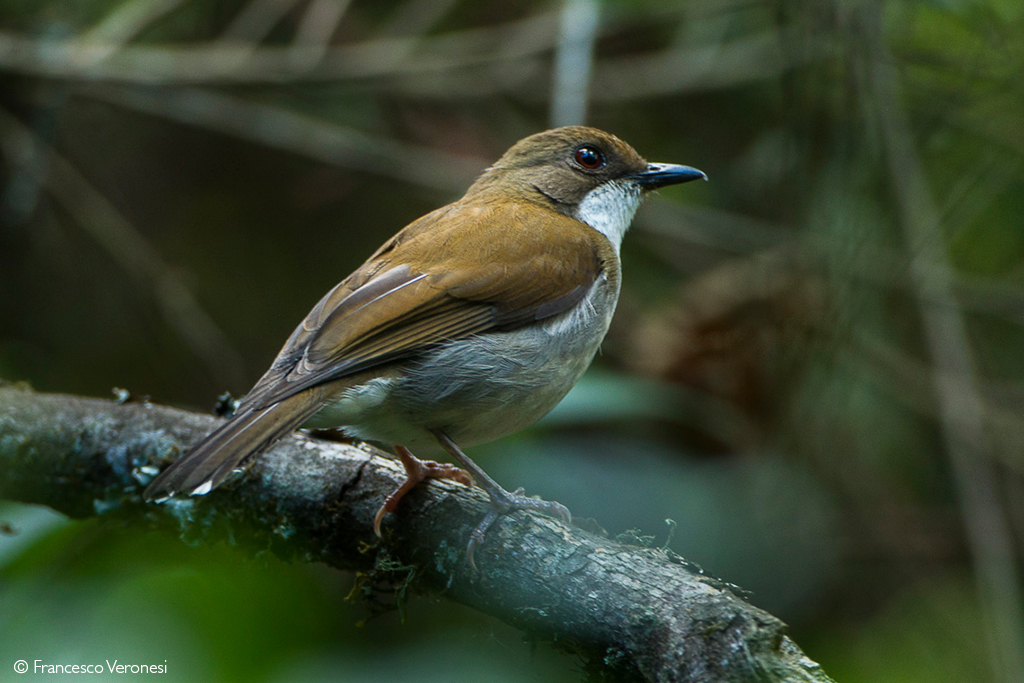 Perched high in the sky amid the clouds in southeast Africa lies a dazzling array of natural wonders. Straddling the borders between Malawi and Mozambique lies a collection of ancient granite mountains that harbour some of the richest biodiversity on the continent. These isolated mountainous habitats are home to rare forests, endemic plants and animals found nowhere else on earth. Now, a group of scientists is proposing that Southern Africa’s threatened ‘sky islands’, consisting of 30 isolated mountains in southern Malawi and northern Mozambique, be declared as Africa’s newest ecoregion.
Perched high in the sky amid the clouds in southeast Africa lies a dazzling array of natural wonders. Straddling the borders between Malawi and Mozambique lies a collection of ancient granite mountains that harbour some of the richest biodiversity on the continent. These isolated mountainous habitats are home to rare forests, endemic plants and animals found nowhere else on earth. Now, a group of scientists is proposing that Southern Africa’s threatened ‘sky islands’, consisting of 30 isolated mountains in southern Malawi and northern Mozambique, be declared as Africa’s newest ecoregion.
A long, long time ago (8 to 33 million years ago), large parts of eastern and southern Africa were covered with rainforest. Then came periods of geological activity and continental uprising, and the climate became drier, and rainforests disappeared. Except, that is, for pockets of rainforest on the cooler, wetter slopes of higher mountainous areas. During these periods of isolation, the rainforests became ‘islands’ in effect.
The breaking up and reconnecting of the rainforest across Africa has happened several times since the beginning of time, resulting in these isolated forests on the slopes of mountains becoming reasonably similar to each other, but individually diverse at the same time. These mountain tops have become ‘islands in the sky’. The well-known island phenomenon resulting from these periods of isolation is known as allopatric speciation. This is when a species separates into two separate groups that are isolated, making it impossible for them to breed with one another. They end up diverging into two separate species. (This explains to some degree why islands such as Madagascar have high species richness.)
Now, some of these islands in the sky are getting a new classification – as an ecoregion. Scientists have recently proposed that this new ecoregion in Africa be recognised. An ecoregion is a group of ecosystems with shared geology, evolutionary history, and characteristic species assemblages. A well-known example is the Eastern Arc ecoregion in Tanzania and Kenya. The scientists have proposed that the granitic inselbergs – consisting of an inland archipelago of 30 isolated mountains in southern Malawi and northern Mozambique – are also worthy of this status. They suggest that this ecoregion be referred to as the South East Africa Montane Archipelago (SEAMA).
This name captures why this area is so biologically important. ‘Montane’ refers to the slopes of mountains, and ‘archipelago’ is the collective noun for a cluster of islands. Thus, the ecoregion is made up of isolated mountainous habitats, the conditions of which have resulted in a unique and endemic assemblage of flora and fauna.
SEAMA encompasses 30 granite mountains higher than 1,000m above sea level, with Mount Mabu in Mozambique hosting the largest and Mount Lico the smallest mid-level rainforests in Southern Africa. Their elevations range from 800m to an impressive 3,002m at Mount Mulanje, Southern Africa’s second-tallest freestanding peak. These mountains date back 600-126 million years. Each mountain supports plants and animals that evolved in isolation over millions of years.
“It took decades of international collaboration to gather sufficient evidence to define the ecoregion,” said study leader Professor Julian Bayliss, a Visiting Professor at Oxford Brookes University. More than 100 experts formed part of the surveys. “We documented hundreds of previously undescribed species and researched the geology, climate, and genetic history of the ecosystems,” Bayliss added.


Why has this ecoregion only gained attention recently? Although studies have been undertaken in the southern Malawi inselbergs for over a century, which identified endemic animals and plants, the inselbergs in northern Mozambique have not had the same level of attention due to political unrest. In the last 20 years, though, a plethora of surveys and studies have shown that there are high levels of overlapping endemism between these sites.
Scientists were amazed to discover over 100 types of trees in Mount Mabu in Mozambique’s forest alone. Epiphytic plants drape branches, ferns carpet the jungle floor and orchids feature amid the foliage. Spotlight surveys also revealed a wealth of nocturnal creatures, from giant forest owls to tiny tree shrews. Herping teams have found frogs, snakes and other reptiles adapted for life in this mountain Eden. The mid-elevation rainforests and biologically unique montane grasslands of these inselbergs support 127 endemic plants, 45 endemic vertebrates (amphibians, reptiles, birds, mammals), 45 invertebrate species (butterflies, freshwater crabs), and two endemic genera of plants and reptile. Many new species have been discovered in the region, too.
The authors define the SEAMA ecoregion as “a range of ancient granitic inselbergs in southern Malawi and northern Mozambique, climatically isolated by topography and trade winds, hosting humid evergreen forest, montane grassland and shrublands notable for their high levels of endemism across multiple taxa.” The definition refers to its climatic envelope, delineated by a break to the north and connections to the coast. The southeast trade winds carry moisture to the mountains of the ecoregion throughout the year, funnelled up through the Mozambique Channel. Still, to the north, outside of the SEAMA, moisture levels drop because these areas are in the “rain shadow” of Madagascar. Further south of the ecoregion, the air is cooler and so holds less moisture, especially in the dry season. So, these islands in the sky are wetter and more humid than the surrounding areas, and this has played a part in why they still support humid evergreen forests and the rich conditions for species diversity and endemicity.
 Keen to visit the unique ecoregions on an African safari? Start planning your handcrafted safari here. Alternatively, browse our ready-made safaris here.
Keen to visit the unique ecoregions on an African safari? Start planning your handcrafted safari here. Alternatively, browse our ready-made safaris here.
The SEAMA ecoregion, with a core area of 336,200ha, incorporates various Centres of Plant Endemism, several Key Biodiversity Areas, nine Important Bird Areas (IBAs), and eight Important Plant Areas (IPAs). It is an area characterised by high levels of endemism and richness. Sadly, the region’s unique fauna and flora are under threat. Since 2000, SEAMA forests have been lost to deforestation, fire, and agriculture, and at some sites, the forest has been completely felled, such as on Mount Thyolo where the Thyolo alethe (Chamaetylas choloensis), a small, shy, chocolate and grey forest bird, was first described. The Thyolo alethe occurs on some of the other mountains, but it is the ‘canary in the goldmine’. Were the Thyolo alethe to disappear from these forests – as it has from Mount Thyolo – this would signify significant damage to these forest ecosystems. Similarly, several pygmy chameleons are also only found on these inselbergs, and unlike the Thyolo alethe, they cannot fly to new areas once their habitat is lost.


The good news is that if this new ecoregion receives the recognition and support it so clearly deserves, several conservation initiatives in place will benefit from an area-wide approach. There are various Mozambican conservation groups focusing on this area, who are now working with mountain communities to reconcile development needs with biodiversity protection. Successful initiatives include alternative fuel sources to reduce firewood demand, sustainable harvest quotas and tourism incentives. Reforestation programs aim to regrow lost habitats. Some of the study’s co-authors are also involved with Mozambique’s National Network for Community Management of Natural Resources (ReGECom). The Mulanje Mountain Conservation Trust is an organisation operating on the Malawian side of the ecoregion.
By increasing SEAMA’s protected area coverage and spearheading land stewardship, conservationists hope to safeguard its natural legacy for future generations. Let’s hope all these fascinating research findings find their way into international conservation arenas and that there is a swell of support for these weird and wonderful sky islands to continue enchanting future generations.
References
Bayliss, J., Bittencourt-Silva, G.B., Branch, W.R. et al. A biogeographical appraisal of the threatened South East Africa Montane Archipelago ecoregion. Sci Rep 14, 5971 (2024).
Truscott, R. New ecoregion proposed for Southern Africa’s threatened ‘sky islands’. Mongabay, published on 13 March 2024.
To comment on this story: Login (or sign up) to our app here - it's a troll-free safe place 🙂.![]()






